5145 Pholus is an eccentric centaur in the outer Solar System, approximately 180 kilometers in diameter, that crosses the orbit of both Saturn and Neptune. It was discovered on 9 January 1992 by American astronomer David Rabinowitz (uncredited) of UA's Spacewatch survey at the Kitt Peak National Observatory in Arizona, United States. The very reddish object has an elongated shape and a rotation period of 9.98 hours. It was named after the centaur Pholus from Greek mythology.

A minor-planet moon is an astronomical object that orbits a minor planet as its natural satellite. As of January 2022, there are 457 minor planets known or suspected to have moons. Discoveries of minor-planet moons are important because the determination of their orbits provides estimates on the mass and density of the primary, allowing insights into their physical properties that are generally not otherwise accessible.

28978 Ixion (, provisional designation 2001 KX76) is a large trans-Neptunian object and a possible dwarf planet. It is located in the Kuiper belt, a region of icy objects orbiting beyond Neptune in the outer Solar System. Ixion is classified as a plutino, a dynamical class of objects in a 2:3 orbital resonance with Neptune. It was discovered in May 2001 by astronomers of the Deep Ecliptic Survey at the Cerro Tololo Inter-American Observatory, and was announced in July 2001. The object is named after the Greek mythological figure Ixion, who was a king of the Lapiths.

38628 Huya ( hoo-YAH; provisional designation 2000 EB173) is a binary trans-Neptunian object located in the Kuiper belt, a region of icy objects orbiting beyond Neptune in the outer Solar System. Huya is classified as a plutino, a dynamical class of trans-Neptunian objects with orbits in a 3:2 orbital resonance with Neptune. It was discovered by the Quasar Equatorial Survey Team and was identified by Venezuelan astronomer Ignacio Ferrín in March 2000. It is named after Juyá, the mythological rain god of the Wayuu people native to South America.

(55565) 2002 AW197 (provisional designation 2002 AW197) is a classical, non-resonant trans-Neptunian object from the Kuiper belt in the outermost region of the Solar System, also known as a cubewano. With a likely diameter of at least 700 kilometers (430 miles), it is approximately tied with 2002 MS4 and 2013 FY27 (to within measurement uncertainties) as the largest unnamed object in the Solar System. It was discovered at Palomar Observatory in 2002.
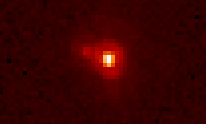
(55637) 2002 UX25 (provisional designation 2002 UX25) is a trans-Neptunian object that orbits the Sun in the Kuiper belt beyond Neptune. It briefly garnered scientific attention when it was found to have an unexpectedly low density of about 0.82 g/cm3.
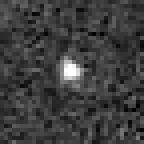
10370 Hylonome (; prov. designation: 1995 DW2) is a minor planet orbiting in the outer Solar System. The dark and icy body belongs to the class of centaurs and measures approximately 72 kilometers (45 miles) in diameter. It was discovered on 27 February 1995, by English astronomer David C. Jewitt and Vietnamese American astronomer Jane Luu at the U.S. Mauna Kea Observatory in Hawaii, and later named after the mythological creature Hylonome.
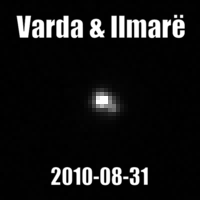
174567 Varda (provisional designation 2003 MW12) is a binary trans-Neptunian planetoid of the resonant hot classical population of the Kuiper belt, located in the outermost region of the Solar System. Its moon, Ilmarë, was discovered in 2009.
(24835) 1995 SM55 (provisional designation 1995 SM55) is a trans-Neptunian object and member of the Haumea family that resides in the Kuiper belt, located in the outermost region of the Solar System. It was discovered on 19 September 1995, by American astronomer Nichole Danzl of the Spacewatch program at Kitt Peak National Observatory near Tucson, Arizona, in the United States. It measures approximately 200 kilometers in diameter and was the second-brightest known object in the Kuiper belt, after Pluto, until 1996 TO66 was discovered.
(79983) 1999 DF9 (provisional designation 1999 DF9) is a trans-Neptunian object of the Kuiper belt, classified as a non-resonant cubewano, that measures approximately 270 kilometers in diameter.

Salacia is a large trans-Neptunian object in the Kuiper belt, approximately 850 km (530 mi) in diameter. It was discovered on 22 September 2004, by American astronomers Henry Roe, Michael Brown and Kristina Barkume at the Palomar Observatory in California, United States. Salacia orbits the Sun at an average distance that is slightly greater than that of Pluto. It was named after the Roman goddess Salacia and has a single known moon, Actaea.
(35671) 1998 SN165 (provisional designation 1998 SN165) is a trans-Neptunian object from the Kuiper belt located in the outermost region of the Solar System. It was discovered on 23 September 1998, by American astronomer Arianna Gleason at the Kitt Peak National Observatory near Tucson, Arizona. The cold classical Kuiper belt object is a dwarf planet candidate, as it measures approximately 400 kilometers (250 miles) in diameter. It has a grey-blue color (BB) and a rotation period of 8.8 hours. As of 2021, it has not been named.
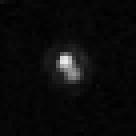
65489 Ceto, as a binary also (65489) Ceto/Phorcys, is a binary trans-Neptunian object (TNO) discovered on March 22, 2003, by Chad A. Trujillo and Michael Brown at Palomar. It is named after the sea goddess Ceto from Greek mythology. It came to perihelion in 1989.
(444030) 2004 NT33 is a classical trans-Neptunian object and possible dwarf planet of the Kuiper belt in the outermost region of the Solar System, approximately 450 kilometers in diameter. It was discovered on 13 July 2004, by astronomers at Palomar Observatory, California, United States.
(589683) 2010 RF43 (provisional designation 2010 RF43) is a large trans-Neptunian object orbiting in the scattered disc in the outermost regions of the Solar System. The object was discovered on 9 September 2010, by American astronomers David Rabinowitz, Megan Schwamb and Suzanne Tourtellotte at ESO's La Silla Observatory in northern Chile.

(612095) 1999 OJ4 (provisional designation 1999 OJ4) is a trans-Neptunian object and binary system from the classical Kuiper belt, located in the outermost region of the Solar System. The bright cubewano belongs to the cold population and measures approximately 75 kilometers (47 miles) in diameter. It was first observed at Mauna Kea Observatory on 18 July 1999. Discovered in 2005, its minor-planet moon is just 3 kilometers smaller than its primary and has an orbital period of 84 days.
(508869) 2002 VT130, provisional designation 2002 VT130, is a trans-Neptunian object and binary system from the classical Kuiper belt, located in the outermost region of the Solar System. It was discovered by American astronomer Marc Buie at Kitt Peak Observatory on 7 November 2002. The primary measures approximately 324 kilometers (201 miles) in diameter.

(524366) 2001 XR254, provisional designation 2001 XR254, is a trans-Neptunian object and binary system from the classical Kuiper belt, located in the outermost region of the Solar System. The cubewano belongs to the cold population and measures approximately 171 kilometers (110 miles). It was first observed on 10 December 2001, by astronomers at the Mauna Kea Observatory, Hawaii. Its 140-kilometer sized companion was discovered by the Hubble Space Telescope in June 2006.

(275809) 2001 QY297 is a trans-Neptunian object from the classical Kuiper belt, located in the outermost region of the Solar System. The binary classical Kuiper belt object belongs to the cold population.
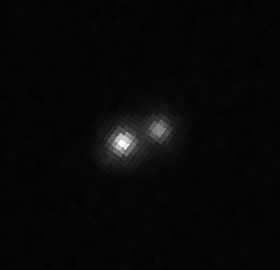
469705 ǂKá̦gára (provisional designation 2005 EF298) is a trans-Neptunian object and binary system of the core Kuiper belt, located in the outermost region of the Solar System. It was discovered on 11 March 2005 by American astronomer Marc Buie at the Kitt Peak Observatory in Arizona. The primary body measures around 140 kilometers (90 miles) in diameter. Its 120-kilometer (75-mile) companion ǃHãunu was discovered with the Hubble Space Telescope in 2009. The ǂKá̦gára–ǃHãunu system is currently undergoing mutual occultation and eclipsing events in which one body casts a shadow on or obstructs the view of the other as seen from Earth.














